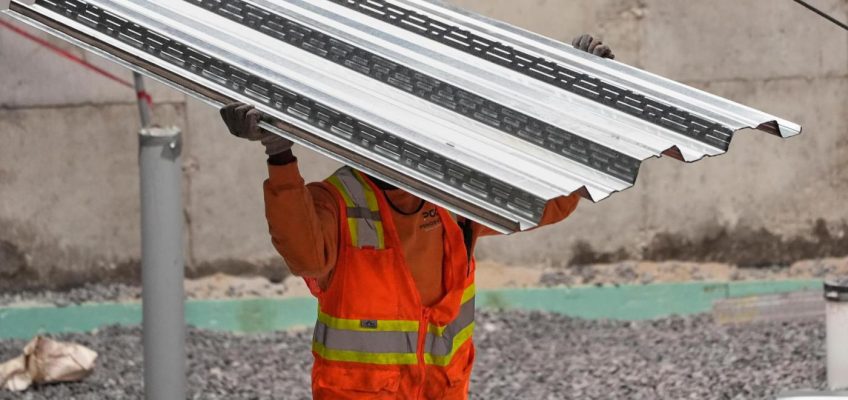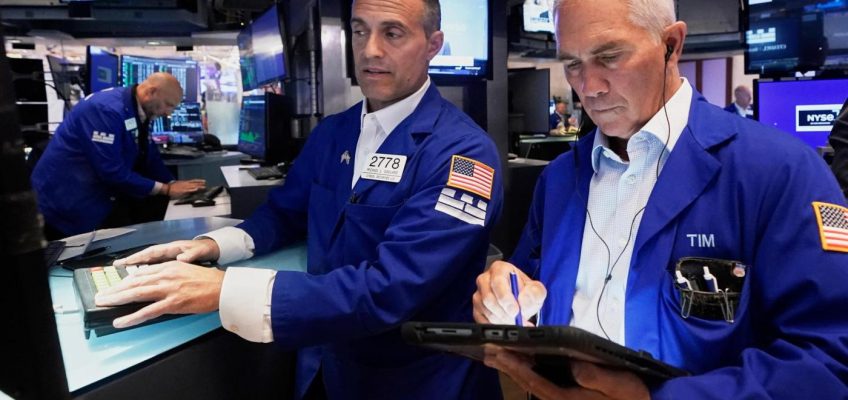ROME (AP) — Pope Leo XIV said in his first interview as history’s first American pope that he has no intention of getting involved in U.S. politics but will raise his voice on issues of concern to the Catholic Church, including on immigration.
Leo spoke on a range of topics — from the Trump administration to the clergy sexual abuse crisis, welcoming LGBTQ+ Catholics and Vatican-China relations — in the interview, published Thursday. It was conducted by Vatican correspondent Elise Ann Allen of the news site Crux for a biography of Leo that was published Thursday in Peru, where Leo was bishop for many years.
Pope Leo XIV delivers his message in St. Peter’s Square on the occasion of the weekly general audience at the Vatican, Wednesday, Sept. 17, 2025. (AP Photo/Gregorio Borgia)
Here are some highlights:
Welcoming the LGBTQ+ community
Leo embraced Pope Francis’ message for LGBTQ+ Catholics that “todos, todos, todos” are welcome in the Catholic Church but said that he found “it highly unlikely” the church’s core doctrine about sexuality would change anytime soon.
The Catholic Church teaches that homosexual people must be treated with dignity and respect, but that homosexual activity is “intrinsically disordered.” It opposes same-sex marriage, saying marriage is a union between a man and woman.
Pope Leo XIV arrives in St. Peter’s Square on the occasion of the weekly general audience at the Vatican, Wednesday, Sept. 17, 2025. (AP Photo/Gregorio Borgia)
“I think we have to change attitudes before we even think about changing what the church says about any given question,” he said.
Earlier this month, the Vatican hosted a Holy Year pilgrimage that included several LGBTQ+ Catholic groups. On Thursday, traditionalist Catholic groups announced a petition asking Leo to “confirm and reaffirm the perennial teaching of the church” on sexuality “in the face of the brazen offensive of those who demand the moral legitimization of homosexual relationships and unions.”
Ties with China
Leo said he didn’t foresee any short-term changes in the Vatican’s controversial 2018 agreement with Beijing over bishop nominations.
The Vatican under Pope Francis had inked the accord hoping it would help unite China’s estimated 12 million Catholics, long divided between those belonging to an official, state-sanctioned church and an underground church loyal to Rome.
“I in no way pretend to be wiser or more experienced than all those who have come before me,” Leo said, adding he was studying the issue and speaking with Chinese people “on both sides” about it.
The Vatican has defended the 2018 accord against criticism that Francis sold out the underground faithful, who endured decades of persecution by the Beijing authorities. The Vatican has said the deal was necessary to prevent an even worse schism in the Chinese church after China named bishops without the pope’s consent.
Sex abuse scandals
Leo said the sex abuse crisis is “a real crisis” that has not yet been solved, and that the church still hasn’t found a way to help victims heal. But he also said the rights of priests must be respected.
“Statistics show that well over 90% of people who come forward and make accusations, they are authentically victims. They are telling the truth. They are not making this up,” he said. “But there have also been proven cases of some kind of false accusation. There have been priests whose lives have been destroyed because of that.”
The pope also said the scandal “cannot become the center focus of the church.”
Leo was instrumental in helping victims of an abusive Peruvian group find justice but he has been accused by a U.S. victim advocacy group of not doing enough to help other Peruvian victims.
Trump and US politics
Leo said he recognized the influence of the United States on world affairs and mentioned migration as one of the issue important to the Catholic Church.
Related Articles
How the Fed’s rate cut impacts mortgage rates
US jobless aid applications retreat to 231,000 after surging to nearly 4-year high a week earlier
Wall Street poised to open at record levels following the Fed’s first rate cut of 2025
More Americans say Israel has ‘gone too far’ in the Gaza conflict, according to new AP-NORC polling
Today in History: September 18, FBI captures Patricia Hearst
He recalled a letter Francis sent to U.S. bishops earlier this year rebuking the Trump administration’s plans for mass deportations of migrants. The letter took direct aim at Vice President JD Vance’s defense of the deportation program on theological grounds.
Leo praised Francis’ initiative and said U.S. bishops showed “courage” in confronting the administration, expressing hopes they would continue to take the lead on such issues.
“One of the last conversations I had with the vice president of the United States – I have not had direct conversations with or have not met the president – I talked about human dignity and how important that is for all people, wherever you’re born, and hopefully to find ways to respect human beings and the way we treat them in the policies and choices we make,” Leo said.
Leo made clear he is not a Trump supporter, adding that he and his brother Luis Prevost, a self-described “MAGA-type,” who has met the U.S. president are in “different places.”
“The United States is a power player on the world level, we have to recognize that, and sometimes decisions are made more based on economics than on human dignity and human support, but (we have to) continue to challenge and to raise some questions and to see the best way to do that,” Leo said.
Women’s voices
Leo vowed to continue appointing women to leadership positions in the church, but tamped down any hopes of ordaining women as deacons or as priests. He pointed to an ongoing study by the Vatican’s doctrine office on the issue.
“I at the moment don’t have an intention of changing the teaching of the church on the topic,” he said. “I am certainly willing to continue to listen to people.”
Vatican finances
Leo inherited a longstanding financial crunch at the Vatican, which has been running a $57 million to $68 million structural deficit, a $1.14 billion pension fund shortfall and declining donations.
The crisis hit hardest during the pandemic when the Holy See’s main source of revenue, the Vatican Museums, closed down.
But things are improving and “it is not the crisis that people have been led to believe,” Leo said.
“I’m not saying we can relax,” he said. “I don’t think the crisis is over, I think we have to continue to work on this, but I’m not losing sleep over it, and I think that it’s important that we communicate a different message.”
Associated Press religion coverage receives support through the AP’s collaboration with The Conversation US, with funding from Lilly Endowment Inc. The AP is solely responsible for this content.




